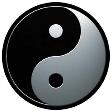Modern medical/scientific research in the last 25 years have shown that practicing Taiji can give rise to a variety of health benefits. These benefits include:
- Lowers blood pressure
- Reduces body pains
- Increases immunity
- Improves physical functions
- Provides positive psychological impacts
- Helps with Parkinson disease and Alzheimer’s disease
- Improves general health
The author recently published an article summarizing the health benefits of Taiji based on these modern medical/scientific research. [1] The present article extracts the part of that published article on why Taiji can give rise to such benefits. After we discuss the fundamental principles of Taiji, then we will discuss how these fundamental principles can give rise to various health benefits..
Fundamental Principles of Taiji: There are several fundamental principles of Taiji:
- Keep good posture when doing the forms, e.g., keep your upper body straight and separate your two feet with a shoulder-width separation in the direction transverse to your direction of motion.
- Move your body strategically, e.g., rotate your waist, and step down on the heel first followed by stepping down on the toes (sometimes known as “cat-step”).
- Don’t oppose an opponent’s force head on, but deflect, supplement, and constantly
change direction. - Integrate movement with slow and deep breathing, especially using Lower Abdominal
Breathing. - Make slow and soft movements.
- Relax body and mind, but mind is not empty.
Applying These Fundamental Principles:
Principle 1: Good Posture: Keeping the upper body straight as in Principle 1 means that the weight of the whole back is firmly supported by the pelvic structure and the legs, and avoids putting any unnecessary stress on any part of the upper body. This is similar to the usual suggestion that when we sit, we should sit upright. Separating your two feet also as in Principle 1 provides a firmer foundation because as long as your center of gravity is between your two lines of feet support, you will not fall. Good posture also means to keep a low stance, because that strengthens your leg muscles. That is why to a certain extent, the lower the stance, the more health benefit the Taiji exercise will bring.
Principle 2: Move Body Strategically: Rotate your waist as much as possible means that you are constantly exercising and strengthening your muscles on both sides of your spine. Doing the cat step means that you have firmer support since the heel provides much stronger support than the toes. This also maximizes the force of your hand strike because when you are stepping down on your toes, your foot and body also move forward as your hand strikes your opponent.
Principle 3: Deflect, Supplement, and Constantly Change Direction: When your opponent tries to punch you, you don’t resist that force head on; otherwise, the stronger person will win. Instead, you deflect that force with a small force perpendicular to the incoming force and also supplementing with a force along the direction
of the incoming force. This uses the principle of “four ounces can deflect a thousand pounds.” This could cause the opponent to lose balance, and the opponent will pull back. Then you also reverse direction and apply a strong force in the new direction. This means that you are constantly changing directions and changing between defending and attacking, as in the Taiji symbol.
Principle 4: Integrate Movement with Slow and Deep Breathing: An integral component of Taiji exercise is slow deep breathing. This not only provides you with more oxygen, but together with using Lower Abdominal Breathing when the diaphragm moves up and down and your abdominal cavity expands and contracts (both front and back), that brings in even more oxygen, and the movement of the abdominal cavity is like massaging the internal organs inside the abdominal cavity, thus strengthening those internal organs.
Principle 5: Make Slow and Soft Movements: Synchronize the slow and soft movements with the slow and deep breathing of Principle 4. Both the slow movements and the deep breathing bring in more oxygen into the body. Therefore, to a certain extent, the slower the Taiji movements, the more health benefits it will result. The slow and soft movements also allow all kinds of people, including young and old, or people not necessarily in good health or with some handicaps, to practice Taiji, making it an exercise that can appeal to all people. It is also one of the reasons that Taiji does not lead to any adverse side effects.
Principle 6: Relax Body and Mind: This is probably the most important principle of Taiji. This reduces stress, which we know from modern medical science can lead to all kinds of health problems. But the mind is not empty. This means that one should get rid of extraneous thoughts in the mind, but the mind focuses only on the task at hand. As a matter of fact, the mind leads the forms, e.g., by visualizing the forms one is performing. The fact that the mind is integrally involved is probably the major reason why Taiji may delay Alzheimer’s disease.
This collection of fundamental principles of Taiji is what makes Taiji to be able to give rise to all kinds of health benefits.
For an application of these principles for lower back pains, see Reference 2. [2]
Final Remark: Besides being a good exercise for health, Taiji is also a good martial art. It turns out that what are good from a health perspective are usually also good from a martial arts perspective. Conversely, what are good from a martial arts perspective are usually also good from a health perspective.
[1] Don M. Tow, “Health Benefits of Taiji,” Qi: The Journal of Traditional Eastern Health & Fitness, Volume 29, No. 3, Autumn 2019, pp. 20-28.
[2] Don M. Tow, “Back Pain and Taiji”: http://www.dontow.com/2019/06/back-pain-and-taiji/

